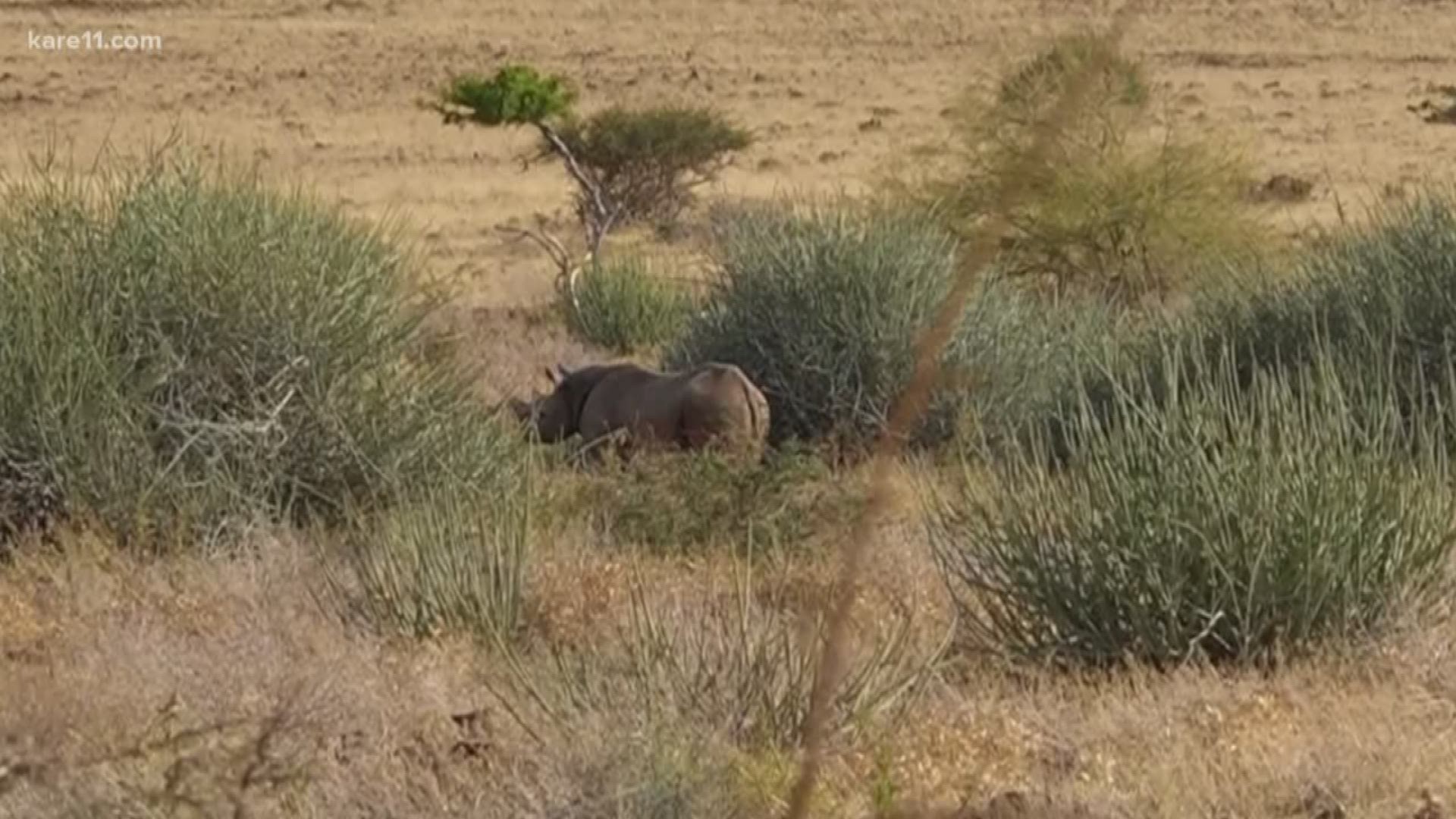GOLDEN VALLEY, Minn. - What’s the biggest animal you can think of? A hippo? A blue whale? An elephant?
Thousands of years ago, the answer was easy. The bosses of the animal kingdom were called ‘mega fauna,’ and their reign was not disputed. The mega fauna used to roam all over Earth, but today their descendants live in Africa. We know them as the rhinos.
Rhinos used to dominate the planet in more areas than just Africa. We’re talking Europe, Asia and North America, too. Habitat isn’t the only change for rhinos since the ice age – they’ve also lost their hair. Rhinos used to be woolly.
Just a few years ago, the remains of a well-preserved baby woolly rhino named ‘Sasha’ made world headlines.
Rhinos and other ‘mega fauna’ were some of the most successful mammal species on the planet – until we came.
Jeff Muntifering, a conservation biologist at the Minnesota Zoo, says that the African country of Namibia is one of the few bright spots in conservation.
“In general, across Africa poaching is still stable at around three rhinos per day.” Muntifering said.
Muntifering has been working to protect wildlife for many years. Namibia is also working hard to preserve these big beasts.
“We’ve (Namibia) surpassed over 12 months of zero poaching.” He said. “We had some extremely bittersweet news last year in August. The very last rhino poached in the region was Sota, the rhino named after the MN zoo.”
Muntifering said the loss hit him hard. He said that Namibian officials caught the poachers almost immediately after, and the three men are still locked up.
That’s a testament to the strong relationship that Muntifering and others have created between local communities, conservation work and tourism. He says he works to change mindsets in local people to see wildlife valued alive rather than dead.
“Tourism is about conservation,” he said. “Tourists tag along.”
One audience for conservation is young school kids. Muntifering works with a school in Swakopmund by targeting them in a way that gets them excited about rhinos. He says it’s a combination of pride and ownership.
Poaching is a huge threat to the rhino population, but climate change is a real threat as well. In fact, Cape Town in Africa almost ran out of water (for its humans!) because of a severe 4-year drought.
Muntifering says the wildlife took a massive hit since just last year.
Significant rains since then have helped produce 10 new rhino calves, which is up from zero last year.
Despite more rhino calves, the population is still in danger. Sota, the MN zoo’s namesake, was a huge loss. It reminds us that this battle is far from over. And it is not a thankless task.
The MN Zoo has been recognized for its tremendous work with rhinos in Namibia by both the American Zoo Association and the William G. Conway Conservation Award.
Also, China recently announced it’s are reinstating the ban on rhino horn and tiger bone. The ban had previously been lifted a couple of weeks ago, but China responded positively to the backlash. This proves that if we all speak up, we can be heard on some of these important issues.

